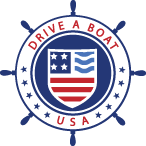Identifying and Avoiding River Hazards: Eddies, Strainers & Sweepers
Embarking on a journey down a river offers a unique blend of adventure and tranquility, but beneath the surface of the flowing water lie hidden dangers that can turn a peaceful trip into a perilous situation.
While the current itself is the most apparent force, experienced boaters know that a true understanding of river safety requires recognizing and respecting specific hazards.
This article will explore three of the most common and dangerous river obstacles—eddies, strainers, and sweepers—providing you with the knowledge to identify them from a distance and the strategies to navigate them safely.
Understanding river hazards: definitions
There are three main river hazards that pose a risk to recreational boaters: eddies, strainers and sweepers. Let’s start by outlining what each one is.
What are eddies?
An eddy is a current of water that flows in a circular motion, often downstream of an obstacle like a rock, a bridge piling, or a sharp bend in the river. It’s essentially a pocket of water that flows upstream, against the main current.
Why eddies are dangerous
The primary danger of an eddy is the strong eddy line. This can be a point of instability, especially for smaller craft like kayaks or canoes. It can also cause you to lose control of your vessel. When you cross from the fast-moving current into a stationary or reverse-flowing eddy, your boat can be spun around or even swamped if you aren’t prepared
What is a river strainer?
A strainer is an obstacle that allows water to pass through but “strains” or traps solid objects, like a boat or a person. They are extremely dangerous because they can pin a vessel or person against a strong current, making it very difficult to escape.
Dangers of a strainer
The force of the current can pin a boat against a strainer, causing it to fold, capsize, or fill with water. A person caught in a strainer can be held under the water by the current, and drown. Strainers are particularly dangerous because the flowing water creates immense, unrelenting pressure.
What are sweepers?
A sweeper is similar to a strainer, but it’s an obstacle (usually a tree or branch) that hangs low over the water, “sweeping” a portion of the river.
Dangers of sweepers
Sweepers can knock a person out of a boat, trap them between the boat and the branches, or capsize the vessel.
Types of boaters who should be familiar with river hazards
Anyone who operates a vessel on a river, regardless of the type or size of their boat, should be aware of river hazards. Boats that are smaller or lighter in weight are at particular risk.
The most vulnerable river boaters are:
- Motorboat operators: While a motorboat is powerful, it is not immune to river hazards. Striking a strainer or submerged object at high speed can cause serious damage to the hull or motor, leading to an accident. The current can also be strong enough to pin a motorboat against an obstruction.
- Anglers: People fishing from small boats, including drift boats or jon boats, often navigate close to banks and structures where strainers and sweepers are most common. They need to be vigilant to avoid getting into trouble while they are focused on fishing.
- Rafters, tubers and water-skiers: People waterskiing or enjoying towed watersports are generally less maneuverable. They can be swept directly into dangerous eddies or strainers and have very little control to avoid them.
- Paddlers: Kayaks, canoes, and paddleboards can be easily swamped, pinned, or capsized.
How to identify river hazards
Identifying river hazards involves keeping watch and being prepared to respond accordingly.
Identifying an eddy
Look for water that is swirling or moving in the opposite direction of the main river flow. The “eddy line” is the visible seam where the main current meets the swirling eddy water. This line can be turbulent and sometimes features a swirling debris field.
Identifying a strainer
Always maintain a watchful eye downstream, especially on turns or in areas with lots of vegetation on the banks. Look for any submerged or partially submerged obstacle that water can flow through, like downed trees or logs with branches, fences that run into the water, and bridge pilings with debris caught on them. A key visual cue is a section of river where water flows but a boat-sized object cannot.
Identifying a sweeper
Look for overhanging branches, often from trees on the riverbank that have fallen or grown out over the water. They are typically seen on sharp bends in the river. The branches may be above the water, but low enough to hit a paddler or the boat.
What to do when you spot a river hazard: 3 steps to staying safe
When you spot a river hazard while boating, the most important thing is to take immediate, decisive action to ensure your safety and the safety of your passengers. The specific action depends on the type of hazard and how much time you have.
1. Slow down, if possible
If you are in a motorboat, reduce your speed to give yourself more time to react. Slower speeds allow for more precise maneuvering and less damage if you do hit something. For paddlers, ease up on your strokes to regain control.
2. Keep cool and evaluate your options
Don’t panic. Can you steer around the hazard? Is there a clear path to one side of the river? Is it possible to get to shore and portage around it?
3. Try to avoid the hazard
If possible, change course and avoid the hazard completely. You can even use the current to help you move away. If you’re approaching a strainer on a turn, for example, you can steer to the outside of the turn where the current is stronger and will help carry you past the danger.
Tip: Look for a “V”
When navigating around obstacles, look for a “V” in the water. An upright “V” points downstream and indicates the main channel or safe passage. A backward “V” points upstream and indicates a rock or other obstacle just under the surface.
What to do if you can’t avoid a river hazard
Sometimes, you don’t have enough time or space to avoid a hazard. Luckily, there are still a few things you can do to stay safe.
If you encounter an eddy
You can actually use an eddy to your advantage. Eddies are often used by experienced boaters, especially paddlers, as a rest stop, as they provide a safe, calm area out of the main current. To safely enter an eddy, you should approach the eddy line at a sharp angle with a strong forward momentum. This helps you punch through the turbulent seam and into the calm water. The important thing is not to let an eddy take you by surprise.
If you are caught against a strainer
Immediately lean into the obstacle, not away from it. This prevents your boat from capsizing and pinning you underneath. Try to climb onto the strainer or a log to get out of the boat and to safety.
If you can’t avoid a sweeper
If you can’t avoid a low-hanging branch, you should immediately lean forward and down in your boat.
If you capsize
If you end up in the water, the first thing to remember is to stay upstream of your boat to avoid being crushed between it and an obstacle. Hold onto your boat if you have no other choice, or, if possible, try to swim to shore. Prioritize your safety over that of your boat.
River boating best practices
- Always scout ahead: Maintain a vigilant watch. Keep your eyes on the water ahead of you, scanning for anything that looks out of place. When possible, get out of your boat and walk along the bank to get a view of what’s downstream, especially on new or difficult sections of the river.
- Read the water: Learn to recognize the signs of a hazard from a distance. The surface of the water can tell you a lot about what’s underneath.
- Wear a PFD: Always wear a personal flotation device. Make sure it is the right type of life jacket for your chosen activity, that it’s in good condition, and that it fits properly. It’s illegal to go boating without one in the United States, and it could save your life if you fall overboard.
- Paddle with a partner: While solo boating may be tempting, it’s always preferable to go boating with at least one other person. A partner can help spot hazards, provide assistance if you capsize, and even make a rescue attempt if necessary.
Learn about safe recreational boating with Drive A Boat USA
The most important thing you can do to boat safely on a river is to be proactive, not reactive.
Being prepared usually involves taking a boater safety course from an approved provider. Drive A Boat USA offers 100% online state-specific boating courses and certifications in New York, Florida and California. Sign up today to get certified and take to the water safely in your state!

